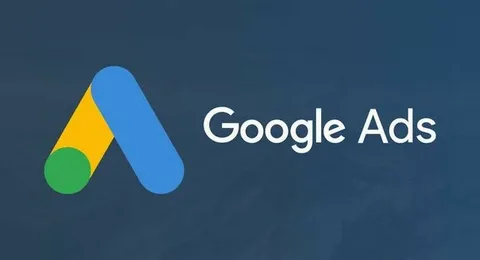Google Ads is a powerful tool for businesses seeking to expand their reach and attract potential customers. However, even with precise targeting options, businesses often encounter a critical challenge: “personne hors cible google ads“ or targeting individuals outside their intended audience. This issue can result in wasted ad spend, reduced ROI, and frustration for advertisers. In this article, we will explore what causes personne hors cible in Google Ads, how to identify it, and actionable strategies to resolve it.
What Does “Personne Hors Cible” Mean in Google Ads?
The phrase “personne hors cible google ads” translates to “out-of-target persons” in English. It refers to situations where Google Ads campaigns fail to reach the intended audience and instead display ads to users who do not fit the target demographic, geographic, or behavioral criteria.
For instance, an online store selling fitness equipment might find that their ads are being shown to users uninterested in fitness or located in areas where they don’t deliver. This mismatch leads to inefficiencies in the campaign and a lower return on investment.
Common Causes of Personne Hors Cible in Google Ads
1. Broad Targeting Settings
Using overly broad targeting settings, such as selecting “All Locations” or generic keywords, can lead to ads reaching an unintended audience. While broad targeting increases visibility, it often sacrifices relevance.
2. Incorrect Demographic Inputs
Google Ads allows advertisers to filter audiences based on demographics like age, gender, and household income. Failing to configure these filters accurately can result in ads reaching users outside the desired demographic.
3. Keyword Misalignment
Keywords are the backbone of any search campaign. Choosing ambiguous or irrelevant keywords may cause Google’s algorithms to misinterpret the intent, leading to personne hors cible google ads.
For example, targeting the keyword “shoes” without specifying “running shoes” for a sportswear business might attract users searching for fashion footwear.
4. Geographic Targeting Errors
Ads may reach users in unintended locations due to incorrect geographic settings. This often happens when advertisers neglect to exclude certain regions or forget to specify the desired areas.
5. Misconfigured Audience Signals
Google Ads offers advanced audience options, such as affinity audiences and custom intent audiences. Poorly defined audience signals or reliance on automatic suggestions can widen the campaign’s reach too much, resulting in off-target impressions.
How to Identify Personne Hors Cible in Your Campaigns
1. Analyze Campaign Metrics
Look for metrics such as:
- High Impressions but Low Click-Through Rates (CTR): A low CTR often indicates that your ads are not resonating with the audience.
- High Bounce Rates on Landing Pages: If users leave your website immediately, it may be a sign that they were not interested in the product or service.
2. Inspect Audience Insights
Google Ads provides detailed reports about the demographics and behaviors of your audience. Compare these insights with your target audience profile to spot discrepancies.
3. Evaluate Search Terms
Review the search terms report to identify irrelevant queries triggering your ads. This report highlights keywords that might not align with your business objectives.
4. Monitor Location Data
Check the geographic performance report to ensure your ads are being displayed in the intended locations. Unexpected activity from regions outside your target area can be a red flag.
Strategies to Fix Personne Hors Cible Issues
1. Refine Keyword Targeting
- Use Long-Tail Keywords: Instead of broad terms, opt for specific, intent-driven phrases. For example, “affordable running shoes for women” is more precise than just “shoes.”
- Exclude Irrelevant Keywords: Add negative keywords to prevent your ads from showing up in irrelevant searches.
2. Adjust Demographic Targeting
- Review demographic filters and align them with your ideal customer profile.
- Exclude demographics that are unlikely to convert, such as age groups or income levels that don’t align with your product’s affordability or appeal.
3. Enhance Geographic Settings
- Use the “Location Options” setting to target “People in or regularly in your targeted locations.”
- Exclude regions where your services or products are not available to avoid wasted impressions.
4. Leverage Advanced Audience Segmentation
- Utilize custom intent audiences to target users actively searching for products or services similar to yours.
- Test affinity audiences that align with your business’s niche, such as “Health & Fitness Enthusiasts” for a fitness-related campaign.
5. Use Ad Scheduling
Run your ads during specific hours or days when your target audience is most active. This reduces the chances of showing ads to out-of-target users.
Advanced Techniques to Optimize Google Ads Targeting
1. Implement Conversion Tracking
Track key actions such as purchases, sign-ups, or inquiries to measure the effectiveness of your campaign. Conversion data helps Google’s machine learning algorithms refine targeting over time.
2. Dynamic Search Ads
Dynamic search ads use your website’s content to generate ads and match them with relevant searches. This approach minimizes targeting errors by focusing on actual user queries.
3. Experiment with Smart Bidding
Smart bidding strategies like “Target ROAS” (Return on Ad Spend) or “Maximize Conversions” optimize ad delivery for better targeting. These strategies use machine learning to bid on impressions likely to convert.
4. A/B Testing
Regularly test different ad copies, images, and calls-to-action (CTAs) to determine which combinations resonate best with your audience. Testing reduces inefficiencies and helps narrow the focus.
Preventing Personne Hors Cible Issues in Future Campaigns
1. Conduct Pre-Campaign Research
Use tools like Google Keyword Planner and Audience Insights to understand your target market thoroughly before launching campaigns.
2. Set Clear Objectives
Define precise goals, such as increasing website traffic, generating leads, or boosting sales. Your objectives will guide the campaign settings and targeting decisions.
3. Regular Campaign Audits
Continuously monitor and tweak your campaigns based on performance data. Regular audits can help catch personne hors cible google ads issues early.
4. Stay Updated with Google Ads Features
Google frequently updates its platform with new tools and features. Staying informed ensures you leverage the latest targeting options effectively.
Conclusion
personne hors cible google ads issues in Google Ads campaigns can be frustrating and costly, but they are not insurmountable. By understanding the causes, monitoring performance, and implementing targeted strategies, advertisers can significantly improve their campaign efficiency and ROI.
Addressing this issue requires a mix of diligent planning, ongoing analysis, and a willingness to adapt to audience behavior. With the right approach, your Google Ads campaigns will not only reach the right audience but also deliver measurable results that align with your business goals.



